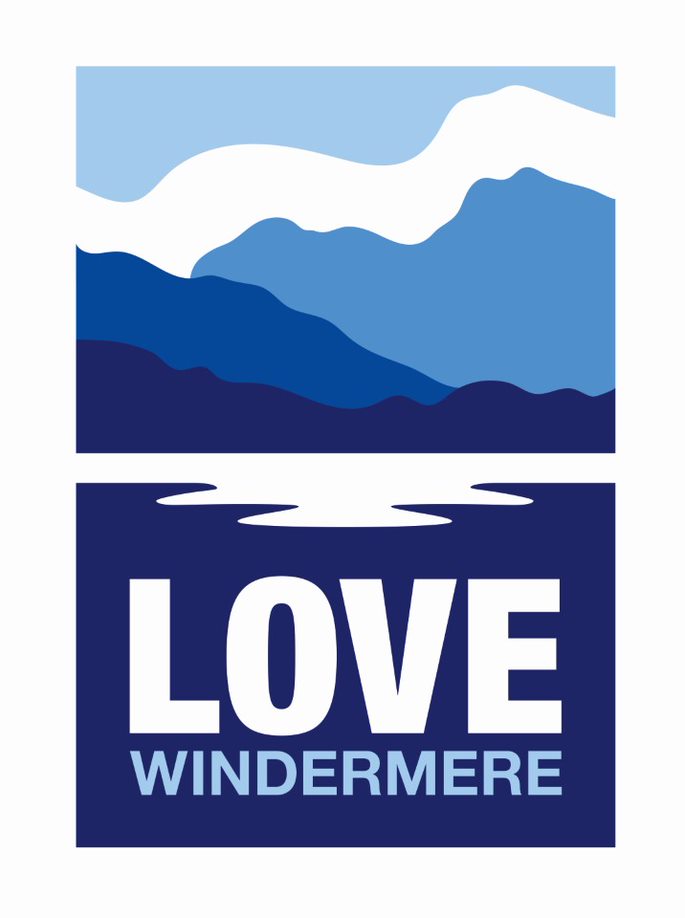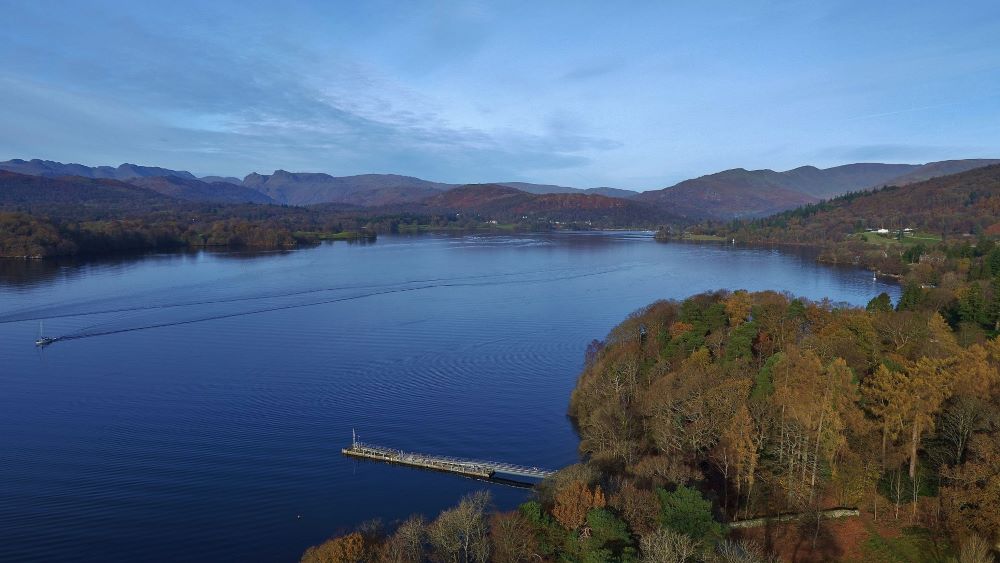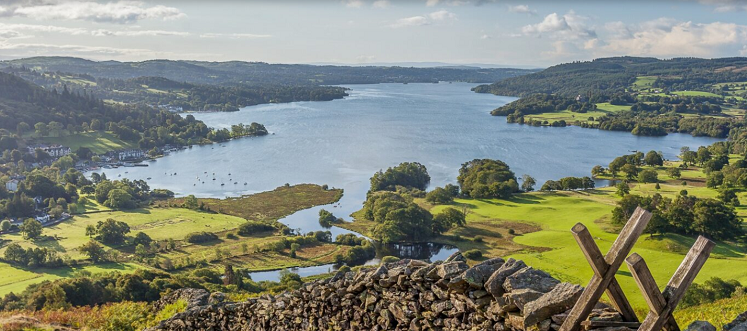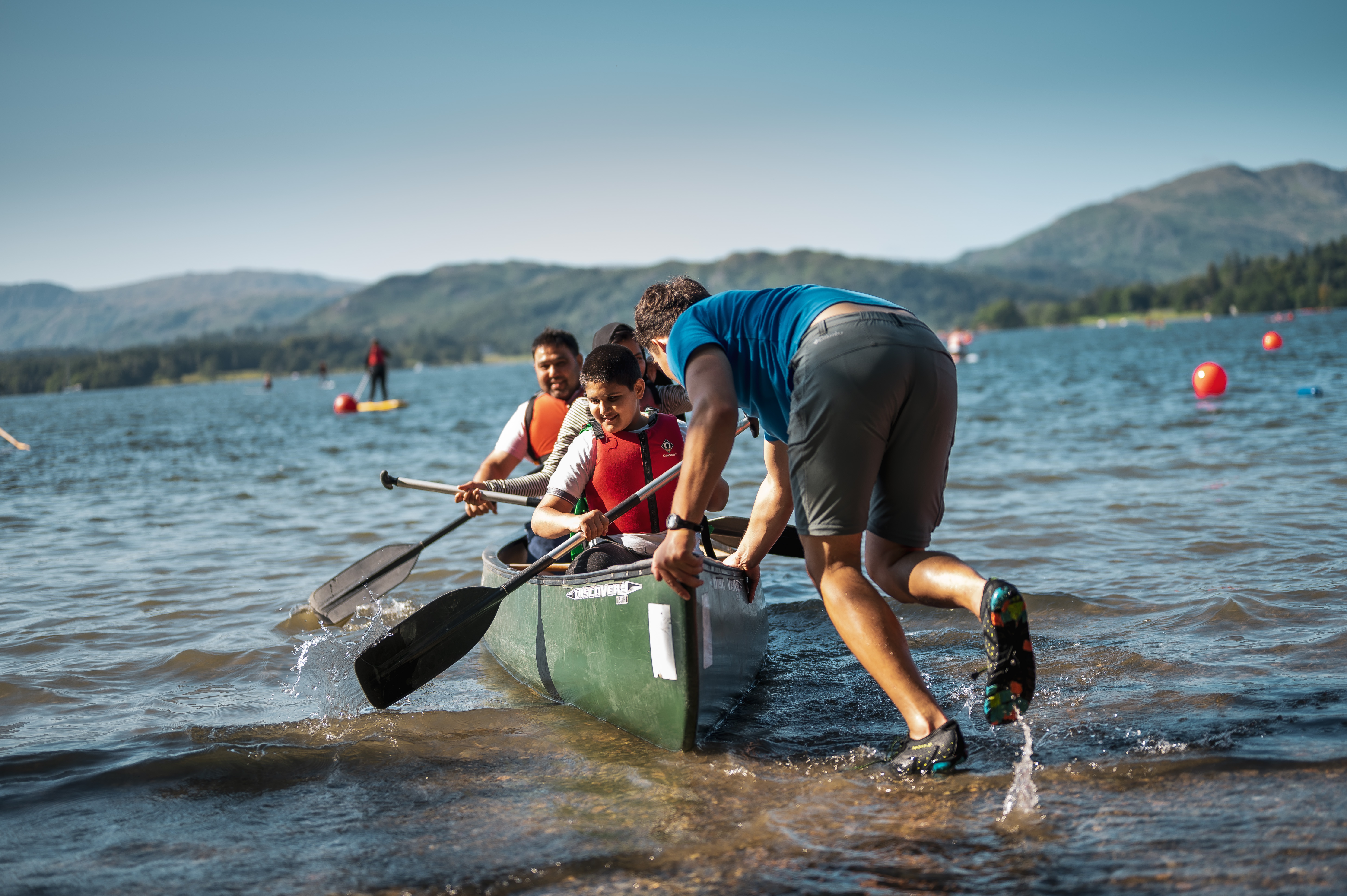 The Love Windermere partnership is working to bring about a healthier future for the lake, by balancing the needs of nature, the community and local economy.
The Love Windermere partnership is working to bring about a healthier future for the lake, by balancing the needs of nature, the community and local economy.
Over the past 50 years, concerns have been raised about the health of Windermere lake, in particular algal blooms and bacterial pollution. Although phosphorus levels have been steadily declining since the 1980s, the overall water quality of Windermere isn't as good as it could be. This is a result of both climate change and nutrient inputs from:
We're working alongside organisations and the community to tackle the water quality challenges in and around Windermere through science-based actions. Find out what's happening on this page below.
Updated 09 September 2024
Treated sewage waste (effluent) is discharged into rivers and streams that feed into the lake from United Utilities Waste Water Treatment Works in the main towns of Ambleside and Windermere, and a number of smaller treatment works (operated by United Utilities) around the wider catchment.
There is a permitted discharge of untreated but screened sewage for storm overflow into the lake at Glebe Road, Bowness-on-Windermere, and at Ambleside. These are regulated by the Environment Agency.
There are also private residential and commercial sites with their own treatment facilities. These range from basic septic tanks to ‘package plants’ that offer a higher quality of treatment. General binding rules establish how these discharges should be managed.
We are part of the “Love Windermere” partnership - the biggest ever cooperation of sectors to tackle challenges in the lake. This evidence-led programme includes a range of actions from partners, which the National Park Authority is supporting, such as the Big Windermere Survey.
Our actions will balance the needs of nature, the community and the local economy. The strategies set out in our
United Utilities has worked to reduce phosphate concentrations in the final treated effluent from all of their sewage treatment works in the Windermere catchment, from 2mg per litre in 1990 to 0.25mg per litre in 2020. This reduction has come about from the most recent improvements at Ambleside Waste Water Treatment Works, Windermere Waste Water Treatment Works and at the Glebe Road pumping station. Between 2020 and 2025 United Utilities are investigating the impact on water quality of the storm sewage overflows from within the catchment to provide the evidence for future improvement schemes. Take a look at the United Utilities plans for Windermere.
Between 2020 and 2025 United Utilities is investigating the impact of the highest-spilling storm overflows throughout the North West region to provide the evidence for future improvement schemes.
In April 2023, United Utilities announced a £19million investment in Windermere to help reduce storm water spills.
Windermere is safe and thousands of people recently enjoyed the Great North Swim from the Brockhole Visitor Centre lakeshore. There are four main bathing water areas in Windermere that are monitored by the Environment Agency and are currently rated excellent: Rayrigg Meadow, Millerground, Lakeside YMCA and Fellfoot. Read more: Bathing water profile (data.gov.uk).
However, during warmer months, localised areas of blue-green algae may occur in Windermere and other lakes. This can be toxic to humans and animals, so please look out for local signs next to the lake or check the Environment Agency’s map for reported algal blooms.
Algal blooms occur naturally in bodies of water, and some such as blue-green algae can be toxic to humans and lethal to animals. The algae area, or blooms, are usually in one part of the water, they are temporary and not all blooms are toxic. However, it's impossible to tell if the algae is the dangerous kind just by looking at it, so it's best not to enter the water if you suspect there is algae. Look out for local information next to the lake or check the Environment Agency’s map for reported algal blooms.
Read more about the current algal blooms (cyanobacteria) in this statement from the Freshwater Biological Association, UK Centre for Ecology and Hydrology and Lancaster University.
You can also use the Centre for Ecology and Hydrology’s ‘Bloomin Algae’ app to record and report any bloom you spot.
Yes, but be aware of localised blue-green algae.
Read more in the answer above.
There are approximately 1500 residential properties within the Windermere lake catchment that aren’t connected to the sewer network which use a septic tank or package treatment plant for sewage and waste water treatment. A number of larger sites, such as hotels, caravan parks and campsites, are also not connected to the sewer network. These sites have permits to discharge treated sewage effluent to watercourse or soakaway. The individual impact on water quality of each of the sites spread throughout the catchment is very low but the cumulative load can potentially be significant.
Any new septic tank or non-mains drainage are subject to planning approval and the National Park Authority’s Local Plan. Applications for planning permission should be supported by a full assessment of the proposed use of septic tanks, to confirm that no adverse effects will arise from the installation. This assessment should focus on the likely effects on the environment, amenity and public health.
High nutrient concentrations (including phosphate in treated sewage effluent and from other sources such as applied fertilisers), can result in a process called eutrophication, leading to increased growth in naturally occurring algae. This can lower the concentration of dissolved oxygen available for fish, as well as smother spawning grounds and prevent light reaching aquatic plants changing the plant communities in the lake.
Monitoring by the Environment Agency hasn’t highlighted any significant hotspots from agricultural pollution. However, studies in the catchment show that agriculture does contribute to phosphate levels in Windermere impacting upon water quality. The Environment Agency offers advice and guidance on best farming practice, preventing pollution and is working with farmers to reduce the impact of their land management on water quality. The Farming for Water Rules require good farming practice to avoid water pollution and benefit farm businesses.
There are many things which residents, businesses and users around the lakes can do to help improve the water quality in Windermere, including:

If your property in or around Windermere is not serviced by mains drainage, it is really important to look after your sewage system as it can affect water quality in the whole area. There are some simple steps to take, such as regular emptying and choosing phosphate-free products. All properties in the area have been sent information from the Environment Agency and Lake District Foundation, and you can find out more on the Call of Nature website.

Visit the Love Windermere partnership website for the latest news on this important project.

Places to visit, things to do, boat hire, walking routes and bike hire around Windermere.